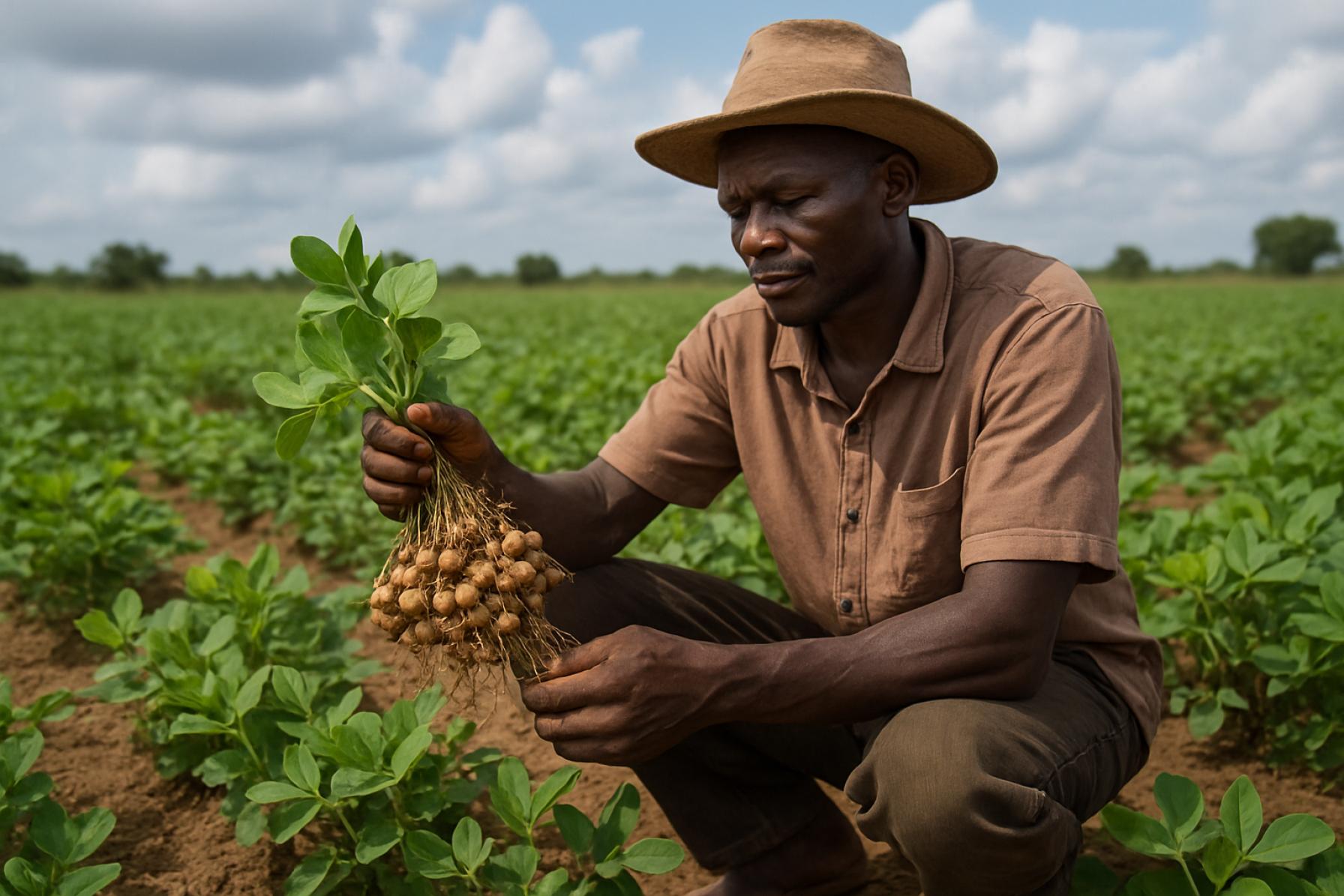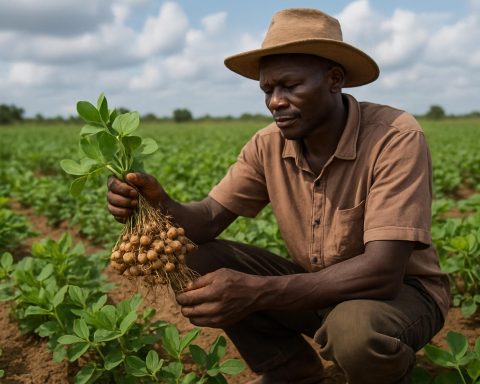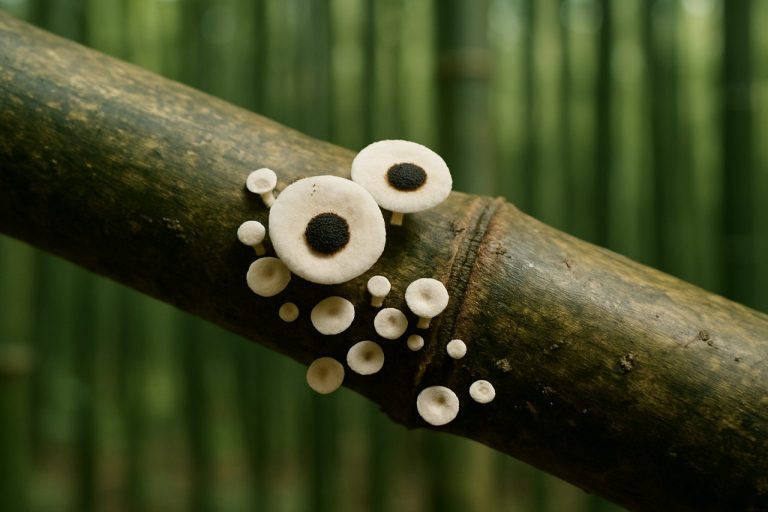The Future of Resilient Farming: How Bambara Groundnut Cultivation Empowers Growers and Restores Soil Health. Discover the Science, Strategies, and Market Potential Behind This Climate-Smart Crop.
- Introduction to Bambara Groundnut: Origins and Global Significance
- Agroecological Requirements and Site Selection
- Seed Selection, Preparation, and Sowing Techniques
- Crop Management: Irrigation, Fertilization, and Weed Control
- Pest and Disease Management in Bambara Groundnut Fields
- Harvesting, Post-Harvest Handling, and Storage Best Practices
- Economic and Nutritional Value: Market Opportunities and Health Benefits
- Challenges, Innovations, and Future Prospects in Bambara Groundnut Cultivation
- Sources & References
Introduction to Bambara Groundnut: Origins and Global Significance
Bambara groundnut (Vigna subterranea) is a resilient, protein-rich legume indigenous to sub-Saharan Africa. Its origins trace back thousands of years, with archaeological evidence indicating domestication in West Africa, particularly in regions that are now part of Nigeria and Cameroon. The crop is traditionally cultivated by smallholder farmers, often in marginal soils where other legumes struggle to thrive. Its ability to fix atmospheric nitrogen and tolerate drought makes it a vital food security crop in semi-arid environments (Food and Agriculture Organization of the United Nations).
Globally, Bambara groundnut is grown across Africa, with expanding interest in Asia and, more recently, in Europe and Australia due to its climate resilience and nutritional value. The seeds are rich in protein (about 18–24%), carbohydrates, and essential amino acids, making them a valuable dietary component in regions prone to food insecurity (Crops For the Future). Despite its significance, Bambara groundnut remains underutilized in global agriculture, often referred to as an “orphan crop” because it receives less research and development attention compared to major staples like maize or soybean.
Interest in Bambara groundnut is growing as researchers and policymakers seek sustainable solutions to climate change and malnutrition. Its adaptability to poor soils and erratic rainfall, coupled with its potential for improving soil fertility, positions it as a promising crop for future food systems (CGIAR). As global efforts intensify to diversify agriculture and enhance resilience, Bambara groundnut is increasingly recognized for its role in sustainable cultivation and food security.
Agroecological Requirements and Site Selection
Bambara groundnut (Vigna subterranea) is renowned for its adaptability to marginal environments, making it a valuable crop for regions with challenging agroecological conditions. However, optimal site selection and understanding of its agroecological requirements are crucial for maximizing yield and quality. The crop thrives best in well-drained sandy or sandy-loam soils with a pH range of 5.0 to 6.5, as waterlogged or highly acidic soils can significantly reduce productivity. While Bambara groundnut is drought-tolerant, it performs optimally in areas receiving 500–1200 mm of annual rainfall, with well-distributed precipitation during the growing season. Excessive rainfall or prolonged flooding can hinder pod development and increase susceptibility to diseases.
Temperature is another critical factor; the crop prefers warm conditions, with optimal growth occurring between 20°C and 30°C. Frost and low temperatures can severely affect germination and early seedling development. Site selection should also consider previous cropping history, as Bambara groundnut benefits from rotation with cereals or other non-leguminous crops to minimize pest and disease buildup and to enhance soil fertility through biological nitrogen fixation. Fields with minimal weed pressure and low incidence of soil-borne pathogens are ideal.
Selecting sites with gentle slopes or flat terrain helps prevent erosion and facilitates mechanized operations if available. Additionally, proximity to water sources can be advantageous for supplementary irrigation during dry spells. Ultimately, careful assessment of soil properties, rainfall patterns, temperature regimes, and field history is essential for successful Bambara groundnut cultivation, as highlighted by Food and Agriculture Organization of the United Nations and CABI.
Seed Selection, Preparation, and Sowing Techniques
Successful cultivation of Bambara groundnut (Vigna subterranea) begins with careful seed selection, preparation, and appropriate sowing techniques. Selecting high-quality seeds is crucial; farmers should choose seeds that are mature, disease-free, and uniform in size to ensure even germination and vigorous seedling growth. It is advisable to source seeds from reputable suppliers or certified seed systems to maintain genetic purity and minimize the risk of introducing pests or diseases (Food and Agriculture Organization of the United Nations).
Prior to sowing, seeds may be treated with fungicides or bio-inoculants to protect against soil-borne pathogens and enhance nodulation, which is vital for nitrogen fixation. In some regions, soaking seeds in water for 6–12 hours before planting can improve germination rates, especially in drier soils (CABI International).
Bambara groundnut is typically sown directly into the field at the onset of the rainy season, as the crop is sensitive to soil moisture at germination. Recommended sowing depth ranges from 3 to 5 cm, with row spacing of 50–75 cm and intra-row spacing of 15–30 cm, depending on the variety and local agronomic practices. This spacing facilitates adequate plant development and reduces competition for nutrients and water (International Crops Research Institute for the Semi-Arid Tropics). Sowing can be done manually or with mechanical planters, but uniform depth and spacing are essential for optimal stand establishment and yield.
Crop Management: Irrigation, Fertilization, and Weed Control
Effective crop management is crucial for optimizing Bambara groundnut (Vigna subterranea) yields, particularly in the areas of irrigation, fertilization, and weed control. Bambara groundnut is renowned for its drought tolerance, often thriving in rainfed conditions with annual rainfall between 500–1200 mm. However, supplemental irrigation during prolonged dry spells, especially at flowering and pod-filling stages, can significantly enhance yield and seed quality. Over-irrigation should be avoided, as waterlogging can impair root and pod development (Food and Agriculture Organization of the United Nations).
Fertilization requirements for Bambara groundnut are relatively modest due to its ability to fix atmospheric nitrogen through symbiosis with rhizobia. Nevertheless, phosphorus is often a limiting nutrient, and application of 20–40 kg/ha of P2O5 is recommended to promote root and pod formation. Potassium and micronutrients should be supplied based on soil test results, as deficiencies can affect plant vigor and seed development. Organic amendments, such as compost or manure, can further improve soil fertility and structure (Centre for Agriculture and Bioscience International).
Weed control is essential during the early growth stages, as Bambara groundnut seedlings are slow to establish and can be outcompeted by aggressive weeds. Manual weeding or shallow hoeing is commonly practiced, particularly within the first 6–8 weeks after sowing. Mulching with crop residues can suppress weed emergence and conserve soil moisture. The use of herbicides is limited due to the crop’s sensitivity and the predominance of smallholder farming systems (International Crops Research Institute for the Semi-Arid Tropics).
Pest and Disease Management in Bambara Groundnut Fields
Effective pest and disease management is crucial for optimizing yields in Bambara groundnut (Vigna subterranea) cultivation. Although Bambara groundnut is generally considered resilient to many pests and diseases compared to other legumes, it is not immune. Common insect pests include aphids (Aphis craccivora), pod borers, and bruchids, which can cause significant damage during both field growth and storage. Fungal diseases such as leaf spot (Cercospora spp.), powdery mildew, and root rot (Fusarium spp.) are also reported, particularly under humid conditions or in poorly drained soils.
Integrated pest management (IPM) strategies are recommended for sustainable control. These include crop rotation with non-leguminous crops, timely planting to avoid peak pest populations, and the use of resistant or tolerant landraces where available. Field sanitation, such as removal of crop residues and volunteer plants, helps reduce inoculum sources for diseases. Biological control agents, such as natural predators and parasitoids, can be encouraged by maintaining field biodiversity. Chemical control is generally discouraged due to the crop’s traditional use and the risk of residue accumulation, but targeted application of approved pesticides may be necessary in severe outbreaks, following guidelines from regulatory authorities like the Food and Agriculture Organization of the United Nations.
Regular field monitoring is essential for early detection and rapid response to pest and disease outbreaks. Farmer training and extension support play a vital role in disseminating best practices and new research findings, as highlighted by the CGIAR. Adoption of these integrated approaches can significantly reduce losses and contribute to the sustainability of Bambara groundnut production systems.
Harvesting, Post-Harvest Handling, and Storage Best Practices
Harvesting of Bambara groundnut (Vigna subterranea) typically occurs 90–180 days after sowing, depending on the variety and environmental conditions. The crop is ready for harvest when the leaves turn yellow and begin to dry, and the pods are fully developed underground. Manual harvesting is common, involving careful uprooting of the plants to avoid pod loss. In some regions, mechanized harvesting is being explored to improve efficiency and reduce labor costs (Food and Agriculture Organization of the United Nations).
Post-harvest handling is crucial to maintain seed quality and minimize losses. After harvesting, plants are left to dry in the field for a few days, allowing the pods to cure and reduce moisture content. Threshing is performed by hand or with simple mechanical devices to separate pods from the haulms. It is essential to avoid excessive force during threshing to prevent seed damage. The pods are then further dried, ideally to a moisture content below 10%, to prevent fungal growth and aflatoxin contamination (CABI Invasive Species Compendium).
For storage, Bambara groundnut pods should be kept in well-ventilated, dry conditions, preferably in jute or polypropylene bags placed on raised platforms to avoid contact with damp floors. Regular inspection for pests such as bruchid beetles is recommended, and the use of botanical insecticides or hermetic storage technologies can further reduce post-harvest losses (International Crops Research Institute for the Semi-Arid Tropics). Proper post-harvest handling and storage are vital for maintaining seed viability and ensuring food security.
Economic and Nutritional Value: Market Opportunities and Health Benefits
Bambara groundnut (Vigna subterranea) cultivation offers significant economic and nutritional value, positioning it as a promising crop for both smallholder farmers and commercial agriculture. Economically, the crop is well-suited to marginal soils and drought-prone regions, reducing input costs and providing a reliable source of income where other crops may fail. Its resilience and adaptability have led to increased interest in local and international markets, particularly as demand grows for climate-smart and underutilized crops. In several African countries, Bambara groundnut is traded in local markets, and there is potential for value addition through processing into flour, snacks, and plant-based protein products, which can enhance profitability for producers (Food and Agriculture Organization of the United Nations).
Nutritionally, Bambara groundnut is recognized for its balanced macronutrient profile, containing approximately 18–24% protein, 5–7% fat, and 50–60% carbohydrates. It is also rich in essential amino acids, minerals such as iron, calcium, and magnesium, and dietary fiber, making it a valuable food for addressing malnutrition and promoting food security. The crop’s low glycemic index and high protein content make it suitable for diabetic and vegetarian diets. Furthermore, its ability to fix atmospheric nitrogen improves soil fertility, contributing to sustainable agricultural systems (CGIAR).
With growing consumer awareness of health and sustainability, Bambara groundnut presents new market opportunities for innovative food products and export, supporting rural livelihoods and contributing to diversified, resilient food systems (Food and Agriculture Organization of the United Nations).
Challenges, Innovations, and Future Prospects in Bambara Groundnut Cultivation
Bambara groundnut cultivation faces several challenges that have limited its widespread adoption and productivity. Key constraints include low yields due to unimproved landraces, susceptibility to drought and pests, and limited agronomic research compared to major legumes. Additionally, the crop suffers from a lack of certified seed systems, inadequate extension services, and minimal mechanization, making large-scale production difficult. Market access and value chain development remain underdeveloped, further discouraging investment by smallholder farmers (Food and Agriculture Organization of the United Nations).
Despite these challenges, recent innovations are transforming Bambara groundnut cultivation. Advances in molecular breeding and genomics are enabling the identification of drought-tolerant and high-yielding varieties. Improved agronomic practices, such as optimized planting densities and intercropping systems, are being promoted to enhance productivity and soil health. Efforts to develop value-added products and improve post-harvest processing are also underway, aiming to increase the crop’s market appeal and reduce post-harvest losses (CGIAR).
Looking ahead, the future prospects for Bambara groundnut are promising, especially in the context of climate change and food security. Its resilience to poor soils and erratic rainfall positions it as a climate-smart crop for marginal environments. Continued investment in research, extension, and market development is essential to unlock its full potential. Strengthening farmer cooperatives and integrating Bambara groundnut into national food policies could further drive its adoption and contribute to sustainable agricultural systems (Centre for Agriculture and Bioscience International).
Sources & References
- Food and Agriculture Organization of the United Nations
- Crops For the Future
- CGIAR
- CABI
- International Crops Research Institute for the Semi-Arid Tropics








